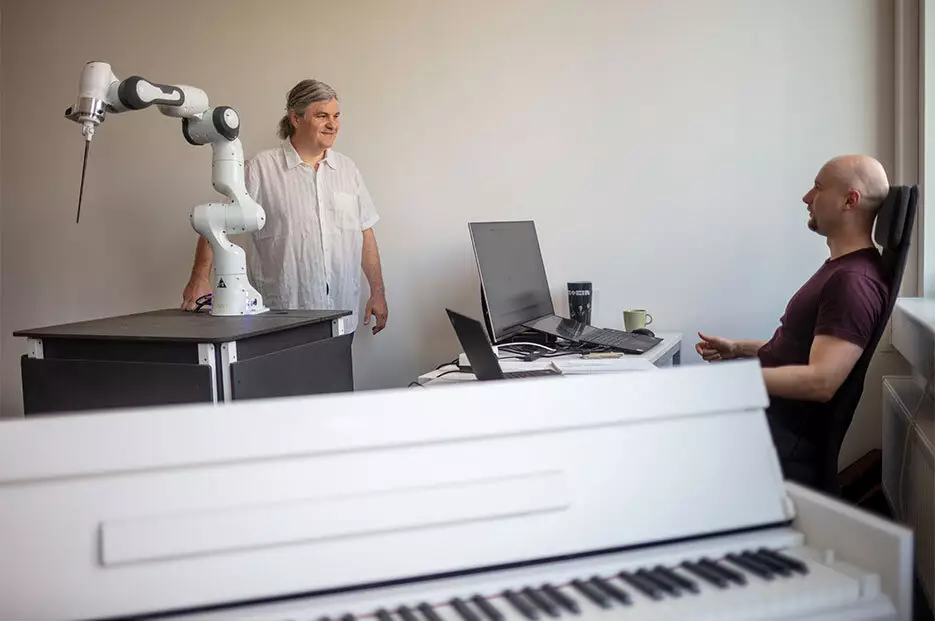In a remarkable display of technological advancement and artistic expression, a three-armed robotic conductor made its debut in Dresden, Germany, captivating audiences and musicians alike. This innovative robot, designed to emulate the nuanced gestures of a human orchestra conductor, showcases an exciting intersection between art and technology. As it directed performances with precision, the implications of such advancements elicit a myriad of discussions about the role of robots in the creative sectors and the future of musical interpretation.
The robot’s distinct design features three articulating arms, each equipped with batons styled after iconic “Star Wars” lightsabers. This design choice not only adds a futuristic aesthetic but also enhances the functionality of the robot, allowing it to perform complex conducting techniques. The independent movement of each arm provides the potential for a level of orchestral direction that surpasses traditional methods, leading to a unique musical interpretation. As the robot conducted the Dresdner Sinfoniker orchestra, the innovation showcased how technology can redefine collaborative art forms.
Central to the development of this robotic conductor was a philosophy of collaboration rather than replacement. Inspired by the researchers at Dresden’s Technical University who focus on “cobots,” or collaborative robots, the project aimed to enhance human musical expression without undermining it. Composer Andreas Gundlach emphasized that the robot was not intended to supplant human conductors but rather to work alongside them, highlighting how the unique capabilities of both can synergize to elevate musical performances.
The process of training the robot proved enlightening for Gundlach, who realized the extraordinary intricacies of human movement that are often taken for granted. The meticulous effort required to program aesthetic gestures into the robot revealed the artistry involved in conducting—a skill that blends physicality, emotion, and intuition. Gundlach’s experience emphasizes that while robots can replicate certain tasks, the depth of human creativity and the emotional connection to music remains irreplaceable.
The robotic conductor’s debut included performances of two specially commissioned pieces: “Semiconductor’s Masterpiece” and “#kreuzknoten,” both of which demanded a unique conducting style due to their complex structures. The three-armed approach allowed for a simultaneous direction of various sections of the orchestra, enhancing the textural layers within the music. This approach encourages composers to push the boundaries of conventional orchestration and consider how technology can reshape not just performance but also composition.
The debut of the robotic conductor in Dresden serves as a poignant reminder of the possibilities at the intersection of technology and the arts. As advancements in robotics continue to evolve, the conversations around their roles in artistic endeavors and the human experience will persist. By embracing these innovations, musicians can explore novel avenues of expression, paving the way for a more dynamic future in music performance. Through collaboration with technology, the essence of human creativity can not only be preserved but also amplified in ways previously unimagined.


Leave a Reply